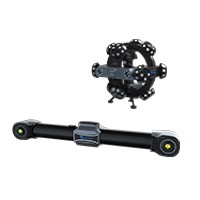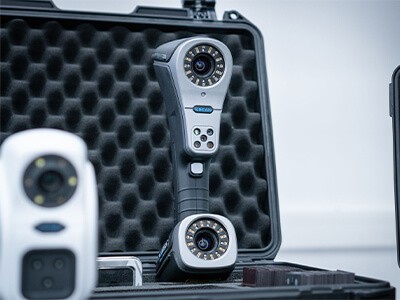Auto sheet metal stamping parts are essential components of modern vehicles, as they form the body shape and provide structural support.
These parts not only determine the aesthetic design of the vehicle, but also affect its safety, aerodynamics, and fuel efficiency.
Hence, maintaining high standards of quality for sheet metal parts is important for achieving the desired outcomes in new vehicle development.
However, inspecting stamping parts is not an easy task. Traditional inspection tools, such as calipers, gauges, are limited by their low efficiency, high cost, and inability to capture the whole complex surface shape of sheet metal parts.
These tools cannot meet the requirements of large-scale automobile production, especially in the era of rapid new vehicle development.
In this blog, we will introduce how we use Scantech’s 3D laser scanner AXE B11 to provide fast, accurate, and convenient inspections of sheet metal stamping parts.
It can capture the full geometry of stamping parts in a matter of minutes, and compare it with the CAD model to identify any defects or deviations.
Inspect Automotive Stamping Parts
The company, in this case, specializes in designing, manufacturing, and selling high-quality moulds, fixtures, and automotive parts for various industries and applications.
They face a challenge in ensuring the quality and fit of the stamping parts that they produce for a leading Chinese car manufacturer.
The customer needs to inspect the hole position, flush, and overall deformation of these parts, as these affect the assembly and performance of the car.
The customer is looking for a solution that can reduce the inspection time, and improve the inspection accuracy and reliability.















